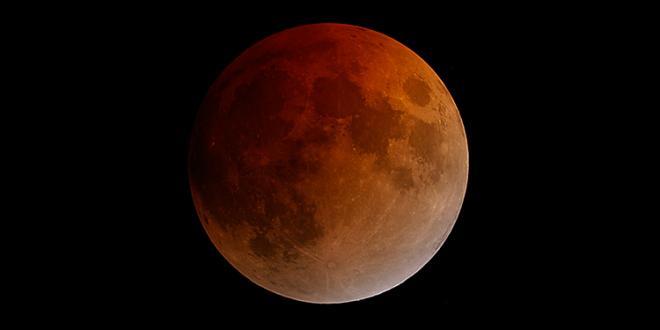“Super blood moon?”
January 29, 2018
By Amy Sayle
What North Carolinians can–and can’t– expect to see from the Jan. 31, 2018 lunar eclipse
You may have heard about a “super blue blood moon” in reference to the lunar eclipse happening this Wednesday morning (January 31, 2018).
Before we get to tips for observing the eclipse, let’s break down that sensational-sounding phrase:
- Blue moon.
This is a misleading term because it suggests the Moon will look blue this Wednesday morning. Not likely. “Blue moon” has more than one definition, but nowadays it commonly refers to the second full moon in a calendar month.

- Supermoon.
Another misleading term. “Supermoon” mistakenly implies that when the Moon happens to be a bit closer to Earth than average the Moon will look “super” big. Don’t plan on being able to notice this effect.
However, if you see it setting this Wednesday morning you might notice the Moon does seem especially large. That’s because of a different effect, where you perceive the Moon as looking big near the horizon: the “moon illusion.”
- Blood moon.
Sounds apocalyptic, huh? “Blood moon” is a dramatic-sounding term some people like to use to refer to an ordinary natural event, a lunar eclipse. A lunar eclipse happens when a full moon passes into Earth’s shadow. The exact color that the Moon appears to turn when this happens varies from eclipse to eclipse, but generally it’s an eerie shade of red.
How are you going to see this lunar eclipse? If you live in North Carolina, the answer is: With difficulty. What you’ll need to do:
1. Get up early on Wednesday.
The lunar eclipse is Wednesday morning, January 31, 2018. The main action starts, as a partial lunar eclipse, just before sunrise, at 6:48 a.m. Eastern time.
This image gives you an idea of what a partial lunar eclipse looks like after it’s in progress. This image shows what happens when for the Eastern time zone, but note that for those of us in the Eastern U.S., the Moon slips below the horizon before totality starts.
2. Find an unobstructed view of the western horizon.
This will be the hard part. For where North Carolina is on the globe at the time the partial eclipse starts, the Moon will appear low in the west. Quite low.
You’ll need a view to the west that’s relatively clear of buildings, hills, or trees. The less-than-ideal location of the Moon (for us) when the action starts is why this particular lunar eclipse is not that great for North Carolina.
3. Adjust your expectations.
We won’t see totality from North Carolina. Totality starts at 7:51 a.m. Eastern time, at which point the Moon will have already set.
Moonset times do vary a bit by location, by the way. You can check your moonset time at the US Naval Observatory site. For Chapel Hill, it’s 7:17 a.m. on Wednesday. The situation improves slightly (later moonset) more towards western NC. But nowhere in our state will the Moon still be up when totality starts.
4. Have clear skies.
Not under your control, of course. But since you won’t be seeing much of anything if it’s cloudy, do check the forecast before you lose sleep or travel in an attempt to see this eclipse.
Also, you’ll be looking for the Moon close to the horizon, which means atmospheric haze could pose a problem for visibility, even if skies are technically clear.
5. Don’t worry about ruining your eyes.
Remember the eye safety warnings about the solar eclipse last August? Those warnings don’t apply here. Lunar eclipses are completely safe to look at. You can use binoculars or a telescope or just your eyes to observe the Moon. But note that the Sun will rise around the time the Moon sets, so be sure to keep any binoculars or telescopes pointed far away from the Sun, and supervise children.
Another option: Mark your calendar for the lunar eclipse on the night of January 20/21, 2019. For North Carolina, the eclipse happens with the Moon high in the sky, and we’ll get to see all phases of the eclipse, including totality. If you miss this eclipse, there will be others! We like to hold events to witness these evenings together, weather permitting. Check out this page for information on upcoming skywatching sessions.
